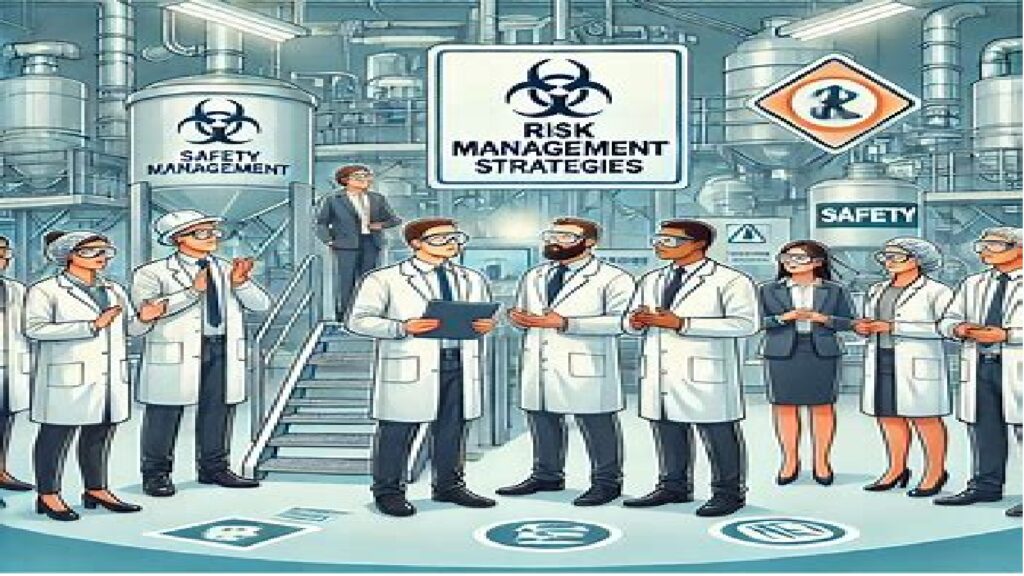1. Automation in Pharmaceutical Manufacturing 1.1. Introduction to Automation in Pharmaceuticals 1.1.1 What is Automation? Automation involves using machines, control systems, and software to perform tasks with minimal human intervention. In pharmaceutical manufacturing, it encompasses everything from production lines to quality control. 1.1.2 Why is Automation Important? Pharmaceutical manufacturing demands high accuracy and compliance with […]
“Revolutionizing Pharmaceutical Manufacturing: The Crucial Role of Blockchain in Ensuring Traceability”
1. Introduction Pharmaceutical manufacturing is a cornerstone of the healthcare industry, ensuring the production of high-quality medicines that improve and save lives. However, challenges such as counterfeit drugs, supply chain inefficiencies, and regulatory compliance pose significant risks. Blockchain technology has emerged as a transformative solution, enhancing traceability, transparency, and trust within the pharmaceutical supply chain.
“Revolutionizing Pharmaceutical Manufacturing Equipment: Key Innovations and Best Practices for the Future”
1. Introduction to Pharmaceutical Manufacturing Equipment Pharmaceutical manufacturing equipment encompasses a wide range of machinery used for processing, blending, granulating, filling, and packaging medications. These machines are designed to meet the unique requirements of producing high-quality pharmaceuticals while adhering to Good Manufacturing Practices (GMP). 2. Key Innovations in Pharmaceutical Manufacturing Equipment 2.1. Continuous Manufacturing Systems
“Revolutionizing Pharmaceuticals: The Impact of Artificial Intelligence in Drug Manufacturing and Development”
1. Introduction to Artificial Intelligence in Pharma AI refers to the simulation of human intelligence by machines. In the pharmaceutical sector, AI is applied in various processes such as drug discovery, predictive analytics, clinical trials, and manufacturing. Its ability to analyze vast amounts of data quickly and accurately makes it a game-changer. 2. AI in
“Unlocking Potential: Opportunities and Growth in Pharmaceutical Manufacturing Across Emerging Markets”
1. Introduction Emerging markets have become a focal point in the global pharmaceutical industry. With rising demand for affordable medicines, increasing healthcare access, and supportive government policies, these regions present immense opportunities for pharmaceutical manufacturing. Emerging markets, including India, China, Brazil, and South Africa, are reshaping the global landscape with their cost-effective production capabilities and
“Navigating Challenges: Effective Strategies for Managing Risk in Pharmaceutical Manufacturing”
1. Understanding Risks in Pharmaceutical Manufacturing 1.1. The Importance of Risk Understanding 1.1.1 Why Risk Awareness is Critical 1.1.2 Role of Risk Understanding in Decision-Making 1.2. Types of Risks in Pharmaceutical Manufacturing 1.2.1 Product Quality Risks 1.2.2 Operational Risks 1.2.3 Regulatory Risks 1.2.4 Supply Chain Risks 1.2.5 Environmental and Safety Risks 1.2.6 Cybersecurity Risks 1.3.
“Optimizing Pharmaceutical Production: The Role of Lean Manufacturing”
Lean manufacturing plays a pivotal role in transforming pharmaceutical production by enhancing efficiency, reducing waste, and ensuring high-quality outputs. This methodology focuses on streamlining processes, optimizing resource utilization, and fostering a culture of continuous improvement. By implementing lean principles, pharmaceutical companies can accelerate time-to-market, maintain regulatory compliance, and reduce operational costs. Additionally, lean manufacturing supports sustainability goals and promotes innovation, making it an essential strategy for meeting evolving market demands and delivering cost-effective medications to patients worldwide.
“Optimizing Pharmaceutical Production: The Role of Lean Manufacturing” Read More »
“Ensuring Excellence: The Crucial Role of Data Integrity in Pharmaceutical Manufacturing”
1. Understanding Data Integrity Data integrity refers to the accuracy, completeness, and consistency of data throughout its lifecycle. It ensures that data, whether in electronic or paper-based formats, is reliable and trustworthy. In the pharmaceutical industry, this includes manufacturing records, laboratory test results, and quality assurance documentation. 1.1 ALCOA+ Principle The ALCOA+ principle underpins data
“Navigating the Challenges of 3D Printing in Pharmaceutical Manufacturing”
1. Introduction 3D printing, also known as additive manufacturing, has emerged as a revolutionary technology in many industries, and the pharmaceutical sector is no exception. This technology, which creates objects layer by layer from digital models, holds the potential to reshape pharmaceutical manufacturing by enabling the development of personalized medicines, improving drug delivery systems, and
“Navigating the Challenges of 3D Printing in Pharmaceutical Manufacturing” Read More »
“Pharmaceutical Manufacturing Outsourcing: Benefits and Challenges Explored”
1. What is Pharmaceutical Manufacturing Outsourcing? Pharmaceutical manufacturing outsourcing involves contracting third-party organizations, known as contract manufacturing organizations (CMOs) or contract development and manufacturing organizations (CDMOs), to handle various stages of drug production. This can include: 2. Pros of Pharmaceutical Manufacturing Outsourcing 2.1. Cost Efficiency One of the primary drivers of outsourcing is cost reduction.
“Pharmaceutical Manufacturing Outsourcing: Benefits and Challenges Explored” Read More »










